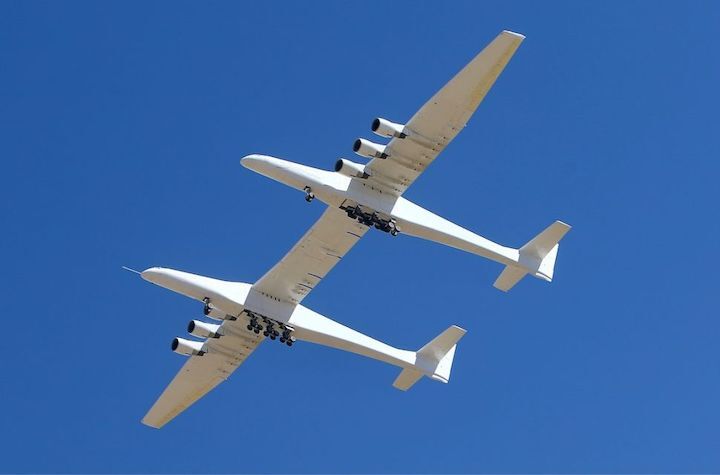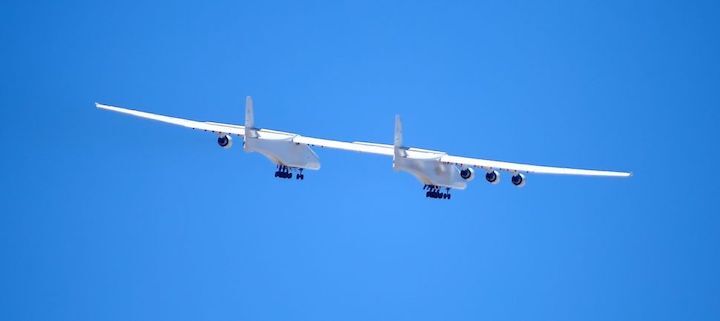26.02.2022
Roc stayed aloft for 1 hour and 43 minutes on Thursday (Feb. 24).

Stratolaunch successfully flew its Roc carrier aircraft for 1 hour and 43 minutes during its fourth test flight, on Feb. 24, 2022. (Image credit: Stratolaunch/Matt Hartman)
The biggest airplane ever built, Stratolaunch's Roc carrier aircraft, just aced its fourth test flight.
Roc, which will eventually haul hypersonic vehicles into the air, successfully finished its latest flight on Thursday (Feb. 24), a jaunt that came on the heels of another test flight in January.
Roc lifted off from the Mojave Air and Space Port in California at 3:23 p.m. EST (1823 GMT) and stayed aloft for 1 hour and 43 minutes, reaching a maximum altitude of 15,000 feet (4,572 meters), Stratolaunch representatives said. The huge aircraft has a wingspan of 385 feet (117 m), more than double the wingspan of a typical commercial airplane.
Thursday's flight was meant to focus on "retraction test of landing gear and further expand the envelope of proven capabilities," according to NASA Spaceflight, which carried a livestream of the event on YouTube.

Another view of Roc during its test flight on Feb. 24, 2022. (Image credit: Stratolaunch/Matt Hartman)
"Today's successful flight demonstrates and validates improvements to the carrier aircraft’s systems and overall flight performance," Zachary Krevor, Stratolaunch president and CEO, said in a statement released shortly after the flight.
"The full landing gear retraction and extension brings the carrier aircraft closer to operational status, a milestone that is necessary to ready the aircraft for Talon-A separation and hypersonic flight tests later this year," Krevor added, referring to one of the company's hypersonic vehicles.
Stratolaunch was established in 2011 by Microsoft co-founder Paul Allen, who wished to create an affordable way to launch satellites in midair, rather than atop a rocket. Allen died in October 2018, before Roc began its test flight program; the first test flight took place in April 2019.
A few months later, in October 2019, the company was sold to a new set of owners who changed Roc's focus to send hypersonic vehicles aloft. These sorts of vehicles can travel at least five times the speed of sound.
While Roc gets most of the public attention, Stratolaunch is looking to the future with a new family of hypersonic vehicles. Prominent among that new set of vehicles is the reusable, 28-foot-long (8.5 m) Talon-A. Talon-A is not expected to take to the air until Roc is further along in its testing series, according to past comments by company representatives.
Stratolaunch initially hoped to perform the first drop tests with Roc and Talon-A early in 2022, but it's common for early test programs to fall behind the timeline due to technical and logistical matters. Eventually, the company will fly an expendable version of Talon-A to high speeds and then proceed with a first flight of a reusable Talon-A, according to plans discussed in 2021.
The company is aiming for a fully operational capability by mid to late 2023, Stratolaunch representatives said in a call with reporters after Thursday's flight.
Potential interest in Stratolaunch's work could come from the U.S. military, which has been developing its own hypersonic vehicles for many years but has not yet made an operational version. The interest comes from the opportunity hypersonic vehicles present to deliver weapons, as hypersonics are maneuverable enough to counteract many traditional defense systems.
Quelle: SC
